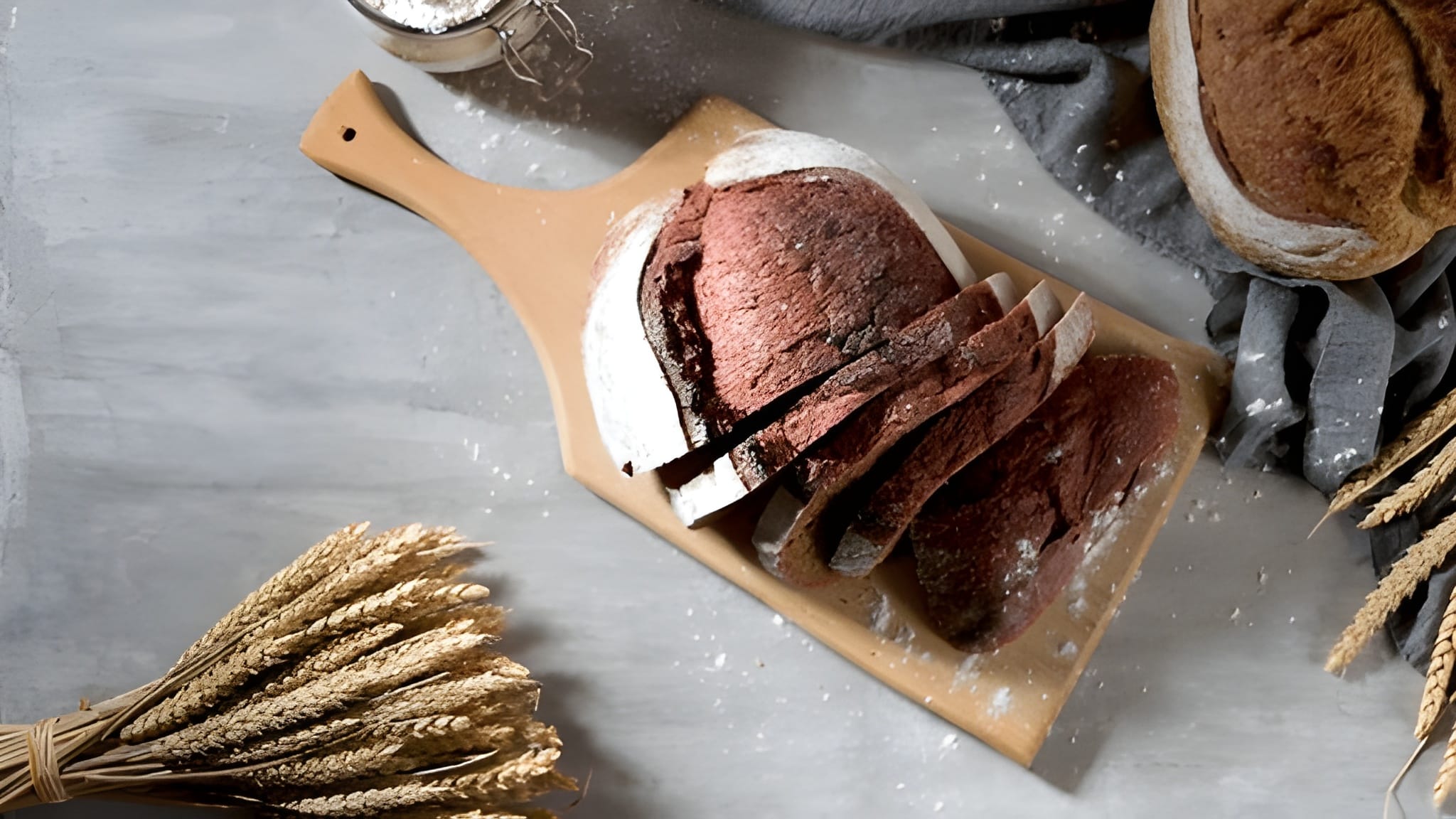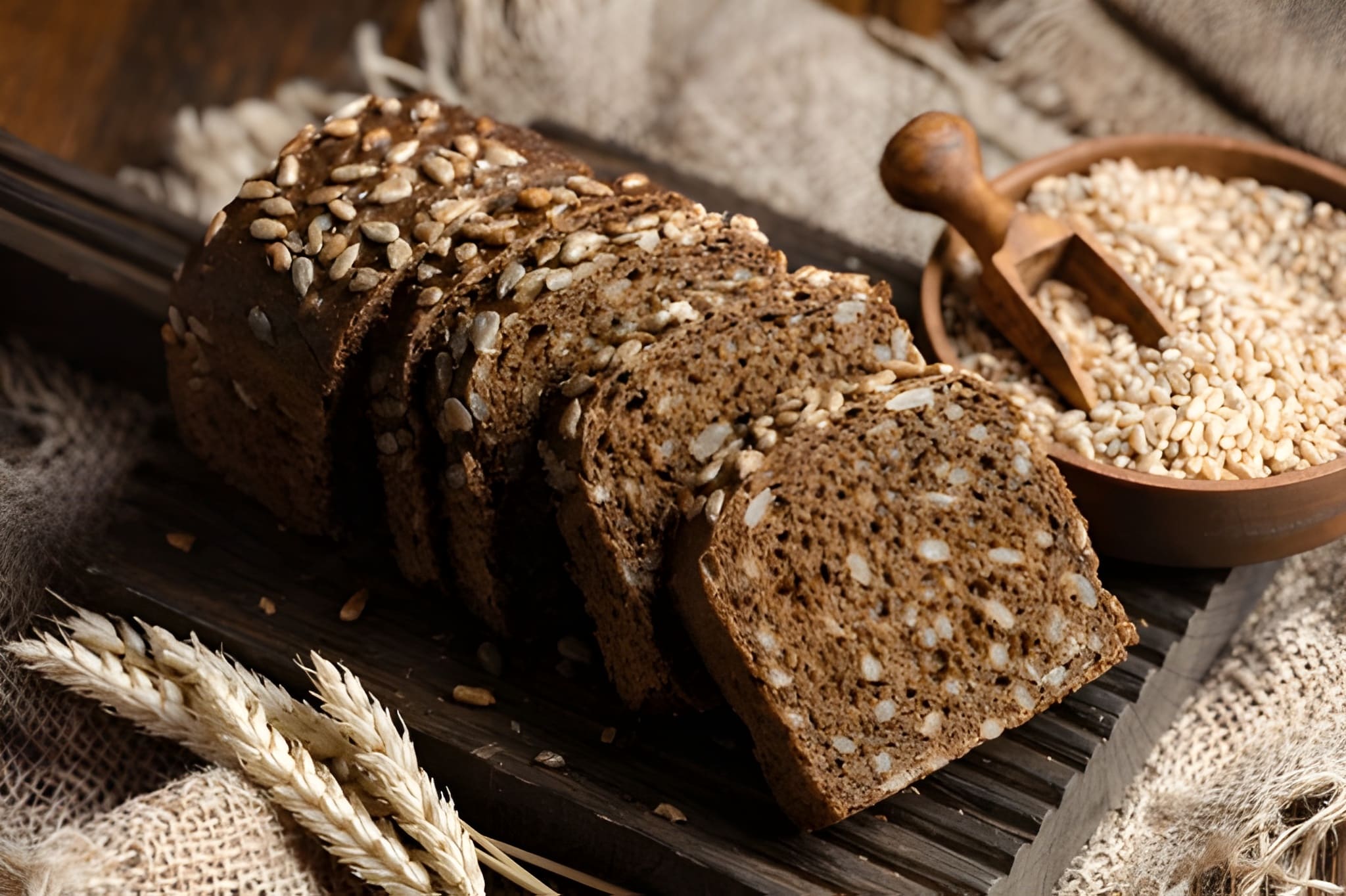Sourdough Rye Bread is a hearty, old-world classic celebrated for its rich flavor, dense texture, and deep, earthy aroma. Combining the tangy complexity of sourdough fermentation with the distinctive taste of rye flour, this bread stands apart from lighter wheat loaves. Rye’s natural nuttiness and slight sweetness give this bread a robust personality that pairs beautifully with cheese, smoked meats, or simply a pat of butter.

Sourdough Rye:
Baking sourdough rye at home is a rewarding journey that connects you to centuries of European breadmaking tradition. Though it requires patience and care, the result is a flavorful, aromatic loaf with a chewy crust and soft interior—perfect for those who appreciate artisanal, nutrient-dense bread.
History:
Rye bread has been a staple in Northern and Eastern Europe for thousands of years, particularly in countries like Germany, Russia, Poland, and the Nordic regions, where rye thrives in cold climates. Before wheat became widely available, rye was the primary grain used for breadmaking. Its resilience and hearty nature made it essential to European diets.
Sourdough fermentation was the natural method of leavening rye breads long before commercial yeast existed. The process not only enhanced the flavor but also improved digestibility and preservation—essential for long winters. Over time, sourdough rye became synonymous with rustic, wholesome living and traditional European baking, influencing iconic breads such as pumpernickel and Borodinsky bread.
Subscribe to our youtube channel Kitchenpedia for more delicious recipes and hit the like button if you enjoyed this youtubevideo. Share it with your friends and Family.
Sourdough Rye
Ingredients
- 1 cup (227 g) active rye or wheat sourdough starter
- 1 ½ cups (340 g) warm water
- 2 cups (240 g) rye flour
- 2 cups (240 g) bread flour (or all-purpose flour)
- 2 teaspoons salt
- 1 tablespoon honey or molasses (optional, for sweetness)
- 1 tablespoon caraway seeds (optional, for flavor)
Instructions
- Activate Starter:Ensure your starter is active and bubbly before mixing. A rye-based starter works best for flavor and fermentation.
- Mix Dough:In a large bowl, dissolve starter and honey (if using) in warm water. Add rye flour, bread flour, salt, and caraway seeds. Stir until a sticky dough forms.
- Knead:Rye dough is stickier than wheat dough—knead gently for 5–8 minutes or use a stretch-and-fold method to develop structure.
- Bulk Fermentation:Cover and let rise at room temperature for 8–12 hours, or until nearly doubled.
- Shape:Transfer the dough to a floured surface, shape into a round or oval loaf, and place seam-side up in a floured proofing basket. Let rise for 2–4 hours.
- Preheat Oven:Heat to 450°F (230°C) with a Dutch oven or baking stone inside for 30 minutes.
- Bake:Score the loaf, place it in the preheated Dutch oven, cover, and bake for 30 minutes. Remove the lid and bake another 10–15 minutes until the crust is dark golden.
- Cool:Cool completely before slicing to allow the crumb to set. Rye bread benefits from resting for several hours before cutting.
Notes
- Rye dough will be sticky—avoid over-kneading; use a dough scraper instead.
- A mix of rye and bread flour improves texture and rise.
- Rest the baked loaf for at least 6 hours before slicing for best flavor.
- Add caraway or fennel seeds for a traditional rye aroma.
- Sourdough rye keeps well—its acidity preserves freshness naturally.
Tips for Sourdough Rye:
- Use a rye-based starter for authentic flavor.
- For a darker loaf, add 1 teaspoon of cocoa powder or molasses.
- Mist the dough before baking for a crustier exterior.
- Allow long fermentation for more depth and digestibility.
- Store in a paper bag or cloth to maintain the crust’s texture.
FAQs FOR Sourdough Rye:
Q1: Can I make this bread with only rye flour?
Yes, but it will be denser. Mixing rye with bread flour gives better structure and lift.
Q2: Why is my rye dough so sticky?
Rye has less gluten than wheat, so it’s naturally stickier—handle gently with a scraper and flour-dusted hands.
Q3: What’s the best starter for rye bread?
A rye-based starter enhances the bread’s flavor and fermentation strength.
Q4: How long should I let rye bread rest before slicing?
At least 4–6 hours; this helps moisture redistribute and prevents gumminess.
Q5: Can I freeze sourdough rye bread?
Yes, slice before freezing for easy thawing and toasting later.
Conclusion:
Sourdough Rye Bread is a rich, flavorful loaf that pays homage to centuries of European baking. Its hearty texture, earthy taste, and tangy aroma make it a satisfying staple for any meal. With patience and care, you can bake a loaf that embodies rustic authenticity, nutrition, and timeless flavor—true artisan bread at its best

